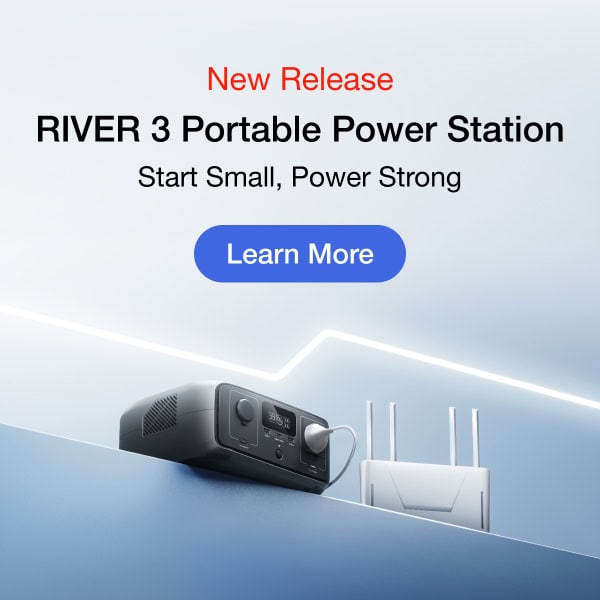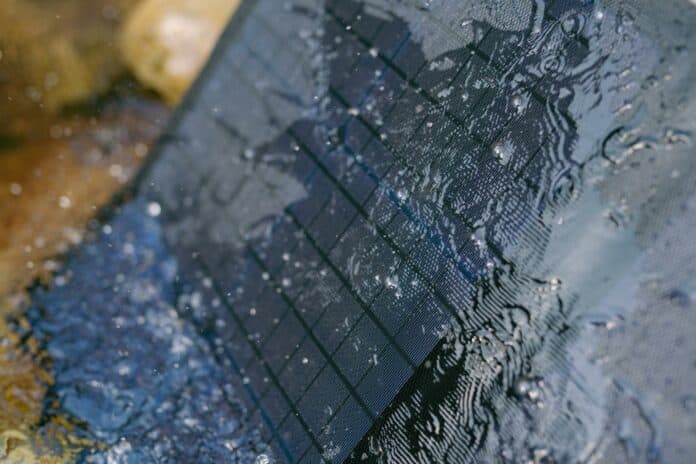Solar panels are surprisingly durable. In most storms, they can withstand the weather onslaughts that come. Even hail is usually not enough to damage your solar panels. But in severe hailstorms, the beating might be too much for the panels to withstand.
The good news is you’re not entirely at the mercy of the weather; there are steps you can take to protect your panels and investment. From buying the right panels to layering on barriers, you can avoid losing your panels in the next hailstorm.
Instead of resigning yourself to storm damage, take some time to prepare for the worst potential storms that might come. It can help keep you from needing to repair or replace your solar panel array.
8 Ways to Protect Solar Panels From a Hailstorm
The beginning point of your solar energy system is the photovoltaic (PV) panels. PV panels sit exposed on your roof or elsewhere unobstructed to collect sunlight and convert it into electricity. Because solar panels are out in the open, you may worry that the glass or other materials are a sitting target for anything heavier than rain.
Fortunately, this is not the case. Solar panels can take a beating and keep going. The tempered glass on the surface is typically strong enough that most hailstorms will not damage your panels.
Despite the durability of tempered glass, extreme weather events with hail can get rough enough to damage the panels.
To protect them against the worst hailstorms, you should take precautions — starting with when you buy the panels.
1. Buy Panels Rated UL 61730, UIC 61730, or IP68
The first step to protecting solar panels in a hailstorm is to buy resilient panels. The materials that go into a solar panel’s manufacture determine its durability.
While most panels produced today are relatively tough, panels rated UL 61730 go through testing to withstand strikes of hail between one and three inches (254mm to 762mm), travelling at speeds up to 88.3 miles per hour (142 km/h). Purchasing panels that meet this certification level can protect your solar array in almost any storm.
Another rating that all rigid solar panels should have is an IP68 rating. An IP68 rating verifies the panel is waterproof and dustproof. Secondary damage can come from hail cracking the panels and letting in leaks, so you want panels rated for all the threats posed by hail.
Most panels manufactured today meet this standard. Your odds are very low that a hailstorm will significantly damage your solar panels. Still, some areas regularly see storms that bring bigger, more dangerous hail.
With weather events growing more severe in recent years and warnings that bigger hailstones are likely to increase with climate change, taking additional measures is crucial. It can give you better protection and more peace of mind going into these storms.
2. Use Protective Covers
When a hailstorm is in the forecast, you can cover your panels to prevent damage. A hard shell covering provides the best protection against impact.
Hard Cases protect the panels completely, taking the full force of hail stones or other weather events, leaving the solar panel beneath it.
The downside is that these shells don’t let in light, so your panels can’t collect solar energy while covered. You need to remember to remove the case again when the storm rolls away, or you lose the benefit you are trying to protect by not allowing the panel to collect and convert the sun’s rays into electricity.
As you might expect, a soft cover provides less protection against hail damage. It dampens both the sound and impact of the hailstones against the glass. However, these are a little easier to handle than the hardcovers. In most hailstorms, this is enough to protect your investment.
3. Spray on a Methacrylate Layer
Methacrylate is a relatively inexpensive spray-on monomer that you can use to protect your panels. It has an advantage over hardcovers in that your solar array can still receive and convert sunlight after you spray it on the photovoltaic panels.
On the other hand, you need to judge the correct amount to use so that it will provide enough protection. You also should avoid spraying methacrylate on the metal parts of the panel, as that can damage it and make it conduct electricity less efficiently.
Methacrylate is one of the most cost-effective protectants your solar panel can have. Too much of it can hurt the panels’ ability to collect and store energy from sunlight. You will want to follow the directions carefully, perhaps isolating a small section first to ensure you are applying the right level.
4. Protect the Panels with Wire Mesh
A wire gauge mesh around the panels can provide a rigid covering that prevents hail from hitting the panel directly. This approach also lets sunlight in so the panels can operate and provides a barrier that protects against large hailstones.
You need to make sure you use the proper distribution of wire mesh. The holes must be big enough to let sunlight through but small enough to prevent the most damaging hail from slipping through.
The wire gauge, like methacrylate, provides a lower-cost approach to protecting your solar investment. The danger here comes in not securing it effectively enough. Wind could knock it loose if the wire mesh isn’t tightly fastened. Any gap in the mesh would leave your panels exposed to hail. You need the cover to be strong enough to withstand the hail but still flexible enough to bend into place and affix to the panel.
5. Adjust the Angles of Your Panels
One of the keys to keeping your solar system working at peak efficiency happens during installation. An expert installer can help ensure the angles are correct for maximum energy collection. However, that positioning can also become crucial when seeking protection against hail damage. You may want to change the orientation to avoid maximum hail impact.
An automated solar panel angle adjuster allows you to change the angle of the panels. Just as they have an optimal angle to take direct sunlight for the most efficient collection of solar energy, they have an angle at which they will take on the most impact from hail. If you can adjust these angles, it can effectively minimise the impact of large hailstones.
Again, caution is critical here. If you use an automatic adjuster, you’ll need to move the panels back into the optimal position for energy collection after the storm has passed. If not, you will lose some of the efficiency of positioning the panels where they maximise incoming sunlight.
If you have portable solar panels, you can also circumvent this problem altogether. When the forecast predicts hail, simply break down the portable panels and store them inside for safekeeping.
6. Inspect Your Panels Regularly
In your car windshield, small cracks can quickly become big. Solar panels are similar in that respect; a hailstone that might not damage a fully intact panel can exacerbate problems on a cracked panel.
For this reason, you need to monitor your solar array’s condition over time and stay on top of maintenance. Repair any damage you identify before a storm turns a minor problem into a bigger one.
With flexible solar panels—constructed of a thin film of monocrystalline photovoltaic cells— your system may be able to withstand the hailstorm. But for rooftop systems using rigid solar panels, damage to a single panel can compromise the efficiency of the entire array.
Often, small cracks don’t impact the overall performance of your solar energy system. Without visual inspection, cracks can go unnoticed before the storm comes. However, once hail hits those vulnerable points, you risk severe damage. Use first-hand visual inspections and maintenance to head off those problems before they arrive.
Contact the manufacturer or a certified repair facility if you identify problems during the inspection. You may need to jump through insurance hoops to get them to cover repairs if you’re not still protected by a warranty. Still, managing this process while the weather is good will go a long way toward preventing larger problems when it turns ugly.
7. Check Your Home Insurance Policy
Solar panels usually comes with a manufacturer’s warranty that depends on particular conditions. For example, faulty installation can void a warranty before you can use it.
A manufacturer’s warranty will also typically have exclusions; it protects you against defects in place at the time of manufacturing. But in all likelihood, it will not include damage that the panels sustain due to weather events like hailstorms.
While solar panel warranties usually don’t cover hail damage, your standard home insurance policy probably does. Look at the policy to confirm, noting any conditions you need to meet before filing a claim. Be careful to follow the instructions carefully to avoid losing coverage on a technicality.
If you sustain damage to rooftop solar panels, filing a claim through your home insurance policy will usually be the right path.
8. Follow the Weather Forecast
Part of being prepared is having what you need to respond to a crisis; the other half is knowing when it’s time to act. When you know inclement weather is coming, track its movements and developments while it approaches. It can help you know when it’s time to cover your panels and prepare to protect your property.
Often, a storm will weaken before it arrives at your home. Other times, it may move off course. Knowing what is coming, though, can help you prepare effectively and be ready before it hits.
The more you do to protect your panels, the better you will likely feel about that investment. Cover or otherwise guard your solar panels, then move inside and out of harm’s way. You’ve done all you can to prepare for the storm, and in most cases, you will have prevented any lasting damage.
FAQs
Solar panels can generally withstand a hailstorm. In some parts of the country, where hailstorms are more frequent and powerful, a hailstorm can be severe enough to damage them. Look for quality materials and take steps to protect your investment if you live in those areas.
Solar panels continue to work when they have small cracks. As cracks get bigger, the array won’t work as well. Once the cracks reach a certain size, it creates a risk of the panel catching fire.
Usually, hail does very little damage to solar panels. However, it can chip, crack, or even break open in powerful storms.
For this reason, you should take steps to protect the panels in climates where hailstorms are frequent.
Most of the time, you can repair hail damage to a solar panel. An expert repair shop can repair the glass and the photovoltaic system parts to ensure your panel can get operational again.
Many solar panel warranties do not include hail damage. However, as long as you have included your solar panels on your home insurance policy, that policy will usually cover hail damage.
Conclusion
In most hailstorms, your solar panels will be perfectly safe. They can take a beating. Only storms with particularly large hailstorms are likely to damage them. Still, it is worth taking preventative measures to protect against damage to your solar energy system. Covering, coating, or even tilting the array away from the incoming hail can keep your PV panels from taking on the worst damage a storm can dish out.Prevention begins with high-quality components. EcoFlow provides high-quality, high-efficiency solar panels and power kits built to withstand extreme weather and temperatures. Whether you are in the market for portable, rigid, or flexible solar panels, EcoFlow’s collection has durable, efficient products for your home.





